Get Hands-on in Rural Japan: Akita Farm Stay


https://pixta.jp/
To those accustomed to the convenient city life of places like Tokyo, the draw of rural Akita is often indiscernible. What is there to experience here? All I see is rice, rice, and more rice, and the closest convenience store is a 40-minute walk away.
To the world, too, the image of Japan is dominated by Tokyo and Osaka’s flashy neon lights, or traditional Kyoto townscapes. Although there are those wishing to journey to unknown places in Japan, they may not know where to look or, not knowing what is on offer, may never think to look in the first place.
That’s why I’m interested to see how the other guests, a mixture of international students and city-dwelling Japanese, will take to this two-day tourism experience of Japanese farm life. Of course, I’m looking forward to the experience myself also.

Once we arrive we quickly spot the other guests (the ones looking obviously lost in middle-of-nowhere Japan) and are rounded up like a herd of sheep by the friendly coordinators. Others coming off the train pretend not to notice, but I catch one or two people glancing our way in mild surprise and curiosity. We stick out like a sore thumb.
Akita Hanamaru Green Tourism is a non-profit initiative which brings additional income to farmers and promotes rural areas. Rural Japan often suffers due to urban migration, which leaves villages with few people but elderly locals. Without young people to work or carry on the community spirit once the elderly pass on, many villages become abandoned. Elderly people that continue to live in such villages are isolated and lack logistical support.
It’s not just care for the elderly which is a concern in rural Japan. Through my excursions with my rural studies class several years ago, I learned about (and saw first-hand) something the locals call kizuna. This translates to "bonds," which are much tighter in smaller, remote communities where people rely on each other. The value that kizuna has to the locals was infectious. Coming from a rural area in New Zealand, I understood their emotions. Kizuna are missing in big cities where most people don’t even talk to their neighbors—and can be a draw for those wishing to reconnect.
The loss of kizuna via the loss of villages is a tragedy to these people, and I must say, to myself also. Green tourism programs like Akita Hanamaru light a path to combating that loss. By giving people unique first-hand experiences, green tourism can re-popularize the country lifestyle and show its worth to outsiders. My biggest hope for this trip was that my fellow guests would too come to see the importance of kizuna and the value of countryside living.
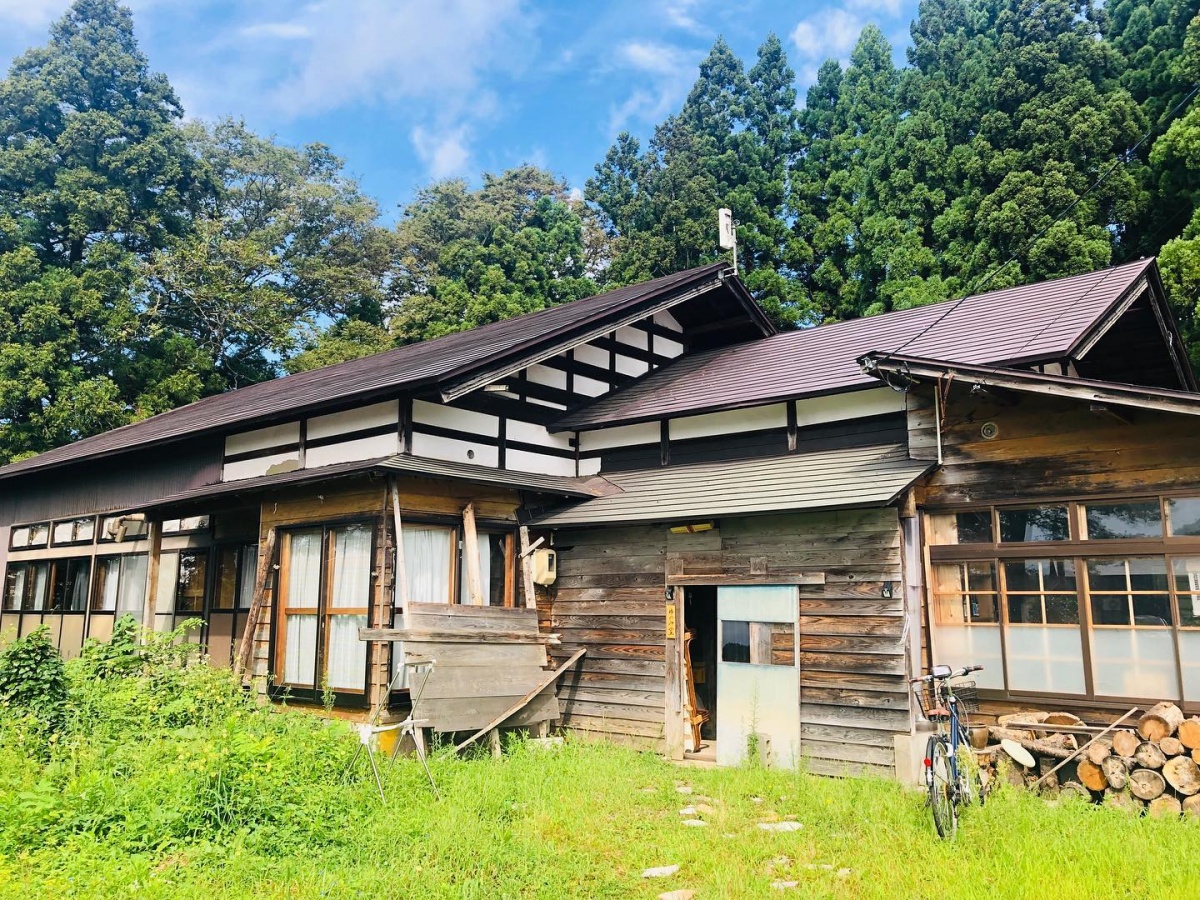
While Japan is famed for its impeccable train systems, rural Japan has fewer trains and stations and it’s necessary to drive farther to reach the farms. Me and my friend Haruka, who has lived in Akita City her whole life without ever exploring the countryside, are grouped with several students from Akita International University, both originally from urban backgrounds. We are assigned to a farmer named Mr, Sato. Despite a short, skinny build and grey hair giving away his advanced age, his eyes glint with the suggestion of a country boy whose stamina knows no limit.
Arriving at Mr. Sato’s farm, we clamber out of the vehicle and take a look at our surroundings. Two light trucks are parked at the end of a gravel driveway leading to a large, very old Japanese house with traditional styled roof tiling and broad wooden walls. Beyond the house, signs of a garden, shabbily built sheds, a paddock and rice paddies stretch up until a thickly forested hill breaks the flatness.
I breathe a sigh of relief, feeling relaxed and at home breathing the fresh air of countryside Akita again. My companions’ expressions show wonderment and refreshment at arriving in a place so obviously free of the restrictions of urban life.
Mr. Sato’s wife and sister are at the door to offer us a warm greeting, and usher us through several sets of traditional sliding doors to a tatami room. They’re both very concerned at the possibility that we might be hungry. Green macha tea and homemade mochi (traditional sticky rice sweets) are dashed out on to the table before us and we set upon them like a pack of dogs. The homemade mochi is unlike any I’ve tasted before, and immediately our group are showering the Satos with complements and wondering at the patience and effort that it must have taken to make the mochi, which involves not just cooking but pounding repeatedly and separating sticky glutinous rice. Perhaps, in this calm and peaceful landscape, the pull of technology weakens and time-consuming arts like mochi-making can be practiced and enjoyed to the fullest.
If there’s one thing I’ve noticed about rural Akita, it’s that gatherings are of special importance. Sharing food, drink and in-depth conversation is always done at least twice per event. Self-introductions and speeches about activities to be done and why they are important are given. At the end, there is a group reflection where everybody is expected to contribute a speech to share their thoughts and thanks. While nerve-wracking, it puts you on par with your group members, and helps gel a strong sense of community. I’ve experienced something similar in my own hometown, which made me realize this is a feature of “kizuna” unique to isolated rural communities.
So it’s no surprise when we are asked to introduce ourselves and our reasons for attending. I feel a pulse of nervousness rise in my body, steadily growing as speech by speech the time for my introduction draws nearer. “Hajimemashite.” I begin a little shakily, but within seconds my fears are doused and replaced by my reawakened passion for rural communities. Once introductions and highly valued getting-to-know-each-other talk is done, it’s time to get to work.
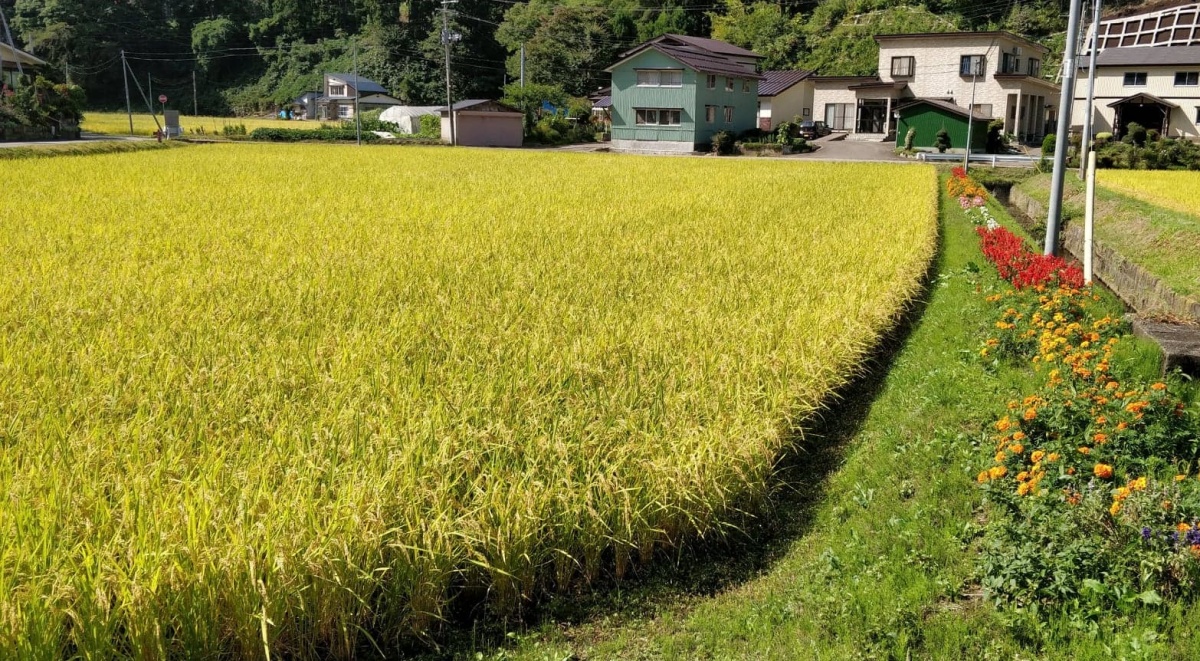
Mr. Sato drives us to a giant barn, except instead of hay, it’s filled with large trailers of rice. From here, you’re going to fill up large woven bags more than half the size of your body with rice, and haul them onto the back of the truck, he tells us. He then says goodbye, driving off in order to get the next trailer-full.
We’re apprehensive, but willing to do our best. Having worked physical jobs before, I get right into it, to the surprise of my peers, who stare at me as if I’m Hulk from the Avengers. At first everyone is doing an alright job, even those with less strength working together cheerfully to fill the bags and get them on the truck. However, after about 20 minutes and no sign of Mr. Sato, we start to tire and only those of us with energy continue to work. I’m still hauling bags of rice onto the truck and relishing in the sweaty challenge when Mr. Sato finally returns. Seeing our exhausted group, he encourages us just a little longer before finally announcing it is lunchtime.
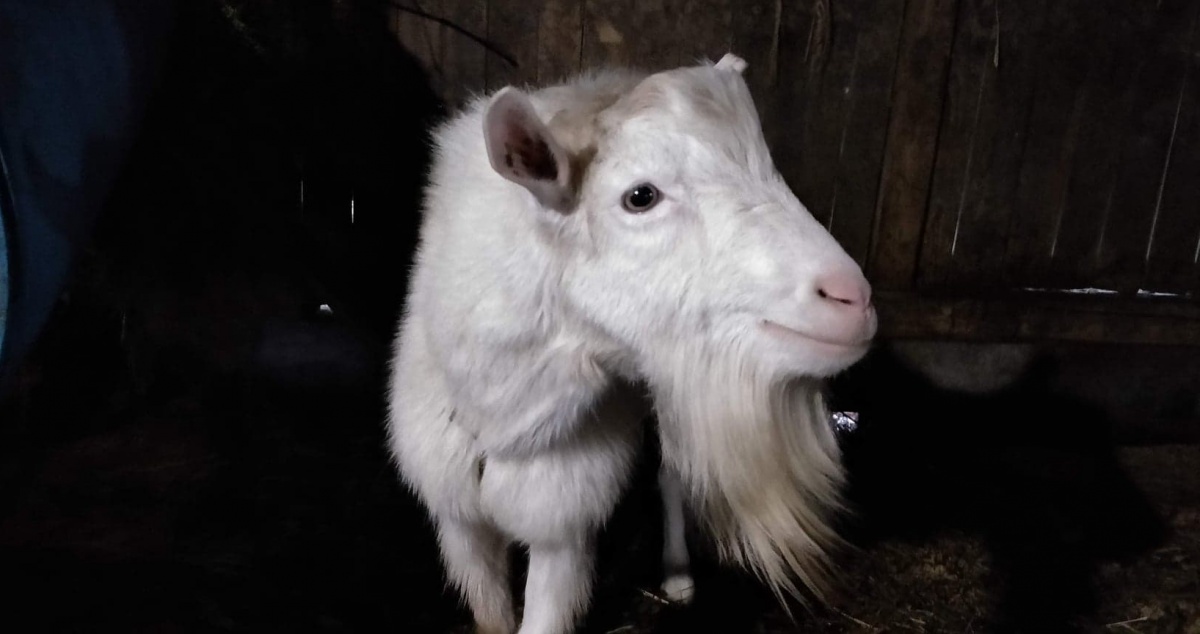
Lunch isn’t quite ready yet; and so we’re sent out to have a look at the paddock and garden. Aside from rice, the main income for Akita farmers, the Satos also run a bit of beef and vegetables, mostly for themselves. We’re in the midst of greeting some cute-looking animals when Mr. Sato, giving away no sign of energy spent this morning, hands us each a pair of thick leather gloves and directs us to a glade of ancient chestnut trees.
You can pick these for eating yourselves, he explains, showing how to extract the nut from a fallen ball of spikes using his fingers.
It looks fairly simple, and I grab a spiky chestnut shell from the ground keenly, trusting my glove a little more than I should. Ouch!, I exclaim, realizing the glove, although helpful, is not sturdy enough to entirely block the nasty spines around the chestnut. Taking a little more care after my demonstration, we set about filling bags with the small chestnut hearts at the center of these spiny shells. Until at last, Mrs. Sato calls us for lunch.
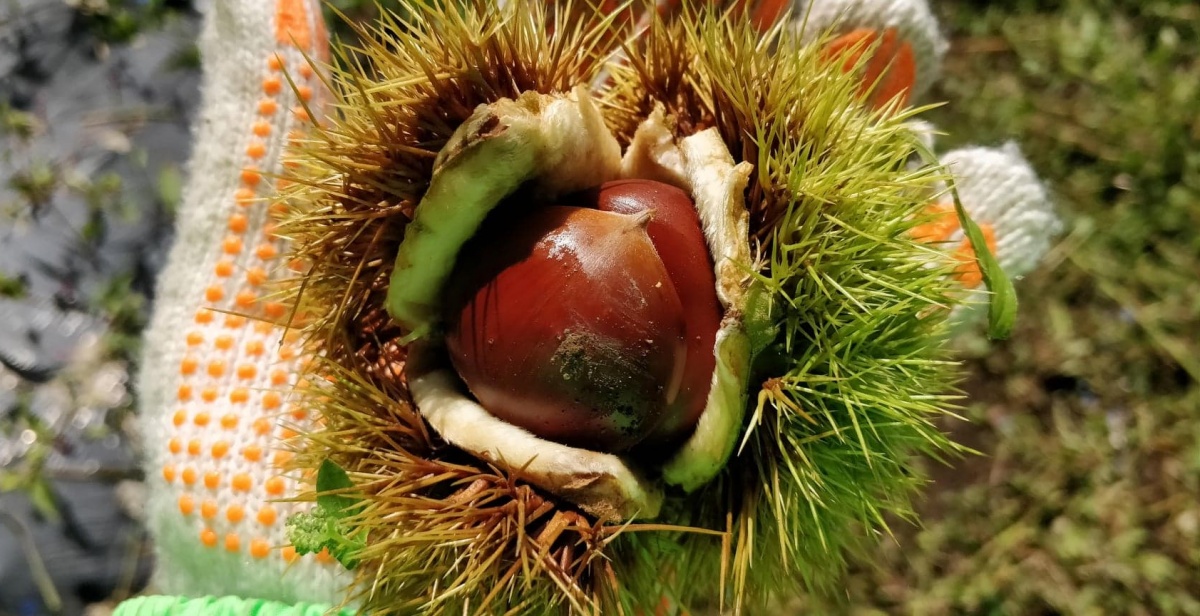
While we help ourselves to one of the most delicious, filling lunches I can remember consisting of famous Akita rice, mountain vegetables from the neighboring hills, local meat, fresh tomatoes, and plenty of home-pickled foods popular in Akita, Mrs. Sato boils our collected chestnuts. By the time we think we have filled ourselves to the brim, the chestnuts are served, bursting slightly out of their hard skins, which are now easy to peel off.
“Umai!” (delicious!) exclaims one of the students. Indeed, the chestnuts fill the taste buds with a sweet, rich taste and we can’t help but eat more. If our muscles ached from carrying rice and our fingers hurt from being stabbed by chestnuts, we restored double the energy from eating lunch. There was something about the array of organic and hand-picked foods which tasted more raw, more flavorsome, than that of the supermarket foods we were used to. A few of us comment on this and the Satos reiterate, eating their own backyard food seems to have had its benefits on their health.
“I’m in my 80s but I’m still farming rice, mostly by myself,” says Mr. Sato. Mrs. Sato and her sister add, not only is the food healthy, but the taste is delicious, and being surrounded by nature every day, they don’t feel old yet!“
Our afternoon consists of a hike up the forested hill, a battle with overgrown branches which proves tough for the city dwellers. At the top we’ve reached our goal; a tiny Shinto shrine which Mr. Sato tells us, he often prays to for a good harvesting season. It’s not until the next day that we really find out the intensity of harvesting rice...
But first a long, cheerful night of reuniting with the other groups for more hearty food, conversation and of course, plenty of sake, which being made from rice, is another famous specialty of Akita. My heart feels warmed by everyone’s comments, reflecting how exciting and crazy the hike had been, how incredible the locals hard work and connection to nature was. They had never experienced anything like it.
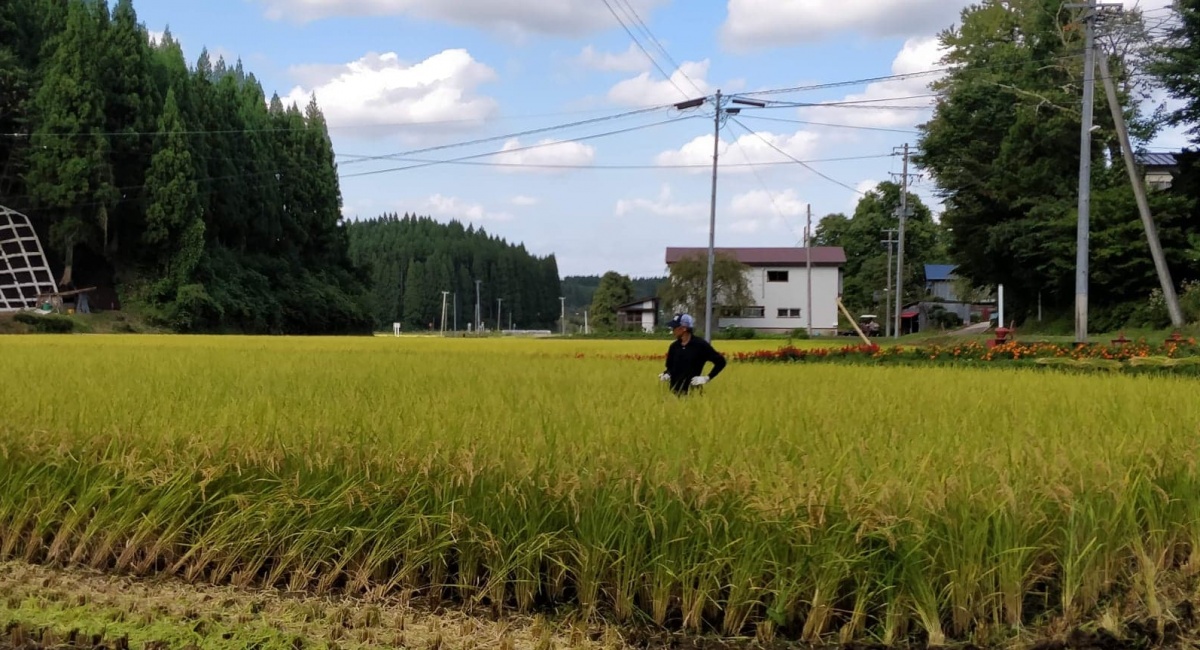
Though hangover and lack of sleep was clearly weighing on us the next morning, awakening to the image of fresh green rice fields and clear blue sky is enough to motivate anyone.
Once again Mr. Sato sets us to work without hesitation, a demonstration of the tougher, traditional method of rice harvesting by cutting with a special curved knife ending with him leaving to work the more modern method, a stalk-cutting tractor. Gumboots sinking in the mud, we approach a corner of the rice field. Grabbing the base of a plant, I swipe the knife swiftly but carefully, finding it to cut easily. We work away until Mr. Sato returns grinning to offer us a ride each on the slicing tractor!
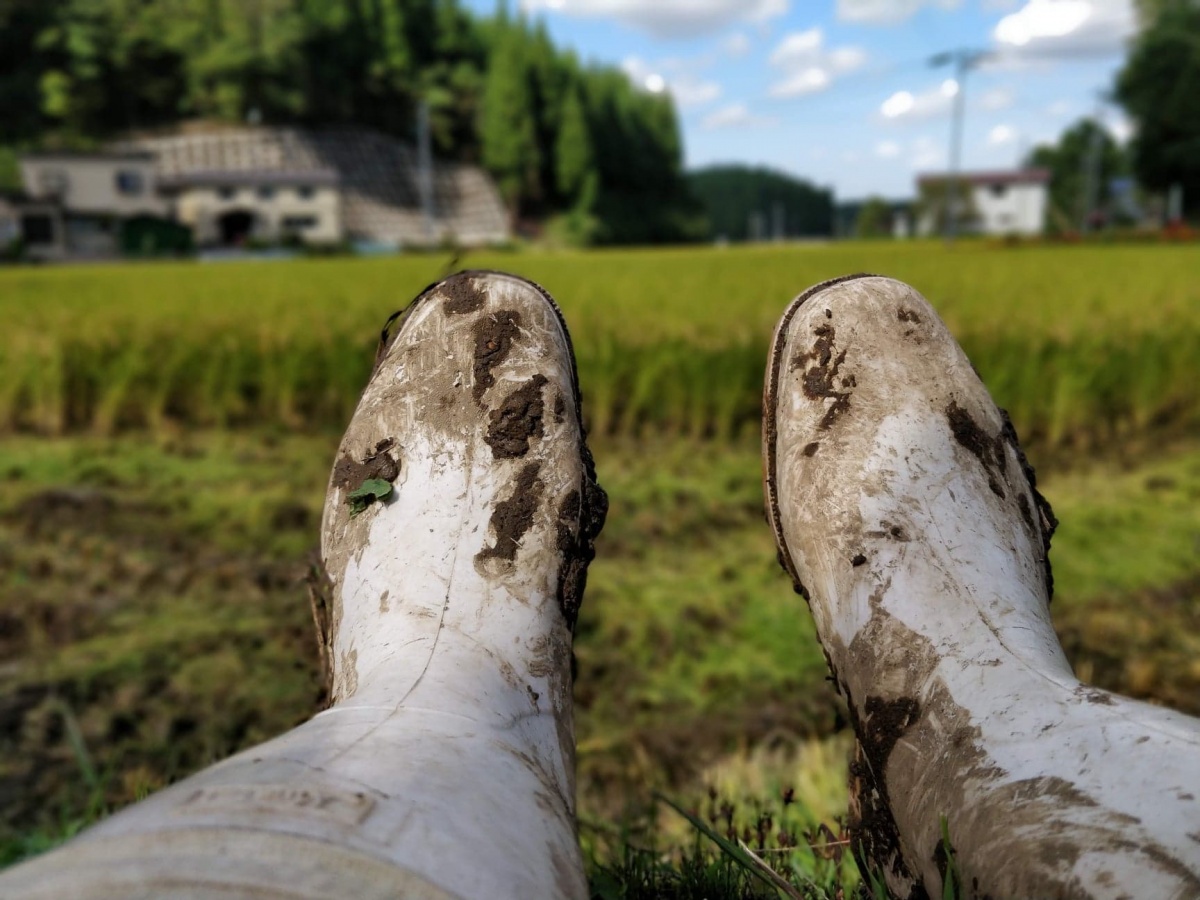
My face starts to echo Mr. Sato’s grin as I watch my companions clamber into the tractor with anticipation. Mr. Sato even lets us drive a little. The expressions turn from anticipation to joy and excitement at the first experience of riding a tractor on a farm.
To my surprise, Mr. Sato has noticed my enthusiasm cutting the rice. The one country bumpkin among us, I must have stuck out a little. Though I think the others, for being far more out of their comfort zone than me, deserve it more, I’m given the seat of honor on our way home, in the front seat of Mr. Sato’s truck.

He starts to ask more about my background and whether I was used to farm life. Despite growing up in a rural area, my family were not farmers. Once upon a time, I had been new to these experiences just like the rest of my group. Watching them had allowed me to re-live the excitement of my experiences; but more than that, as I told him, seeing them realize the most important thing, the kizuna and strength of connection in these communities, truly made me happy.
Green tourism like this has the power to revitalize these communities, to give life back to its fresh, green origins and remind us all that these bonds, kizuna, matter; no matter where in the world you are.



